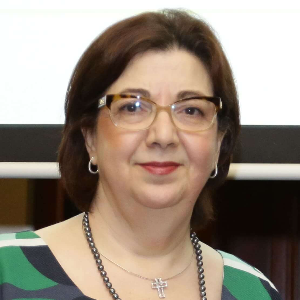Title : Laparoscopic excision of deep infiltrating endometriosis involving the rectovaginal space and bowel
Abstract:
Endometriosis affects 1 in 10 women in the childbearing age. It causes period pain which can be disabilitating and can cause infertility. Severe endometriosis found in 5 – 37% of women. Severe endometriosis diagnosis established in the presence of DIE involving uterus, rectovaginal septum, ureters and bowels. Laparoscopic surgery is associated with a high risk of complications requiring specialist multidisciplinary team approach, compromising of expert gynaecologist, colorectal surgeon, urologist and radiologist. In the United Kingdom the British Society of Gynaecology Endoscopy (BSGE) accredits and monitors recognised centres of care. The Luton University Hospital was accredited by BSGE since 2014 as a specialist centre. In 2018 we established a BSGE accredited centre at Canadian Specialist Hospital. We introduced MRI ENZIAN classification in 2015 to assess the location, size and depth of DIE prior to surgery. Methods and population: In total 76 women had Laparoscopic surgery in the 2 centres. All performed by the same specialist surgical team. 14 cases were operated on at the Canadian Specialist Hospital from 2018 up to February 2019. 62 cases between 2014 and 2017 at Luton & Dunstable University Hospital. We introduced MRI ENZIAN classification in 2015 as part of preoperative assessment. All women completed BSGE pelvic pain questionnaire prior to surgery. Second analysis performed to corelate MRI ENZIAN classification with surgical ENZIAN classifications. We analysed the data of 26 patients between January 2015 and February 2017. MRI reported by one radiologist, all cases managed laparoscopic ally by one Gynaecologist. Age range of patients 22 – 48 years (mean 36.4 years, SD 9.7 years). Results: 76 women completed their pre-operative BSGE pain questionnaire. Length of follow up depends on date of surgery. At 3, 6 and 12 months post-operatively, women reported no symptoms of pre-menstrual pain, dyspareunia or dyschezia. At 24 months post-operatively women reported no symptoms of non-cyclical pain, dyspareunia or dyschezia. All women reported significant improvement in their pain symptoms at 6, 12 and 24 hours post-operatively. There were no conversions to laparotomy. Three complications were reported; one ureteric injury, one bowel leakage and one developed clot in the ureters which resolved with conservative management. For the 2ry analysis, there was statistically significant correlation between MRI ENZIAN classification and surgical findings (P 0.01). MRI identified 92 lesions; 86 of these were confirmed and excised laparoscopically (95%). Histology confirmed endometriosis in all 86 lesions. MRI also identified DIE on the caecum & appendix in 1out of 3 cases. Excellent radio-surgical correlation for recto-sigmoid DIE, identifying 15 out of 17 lesions (88%). MRI identified all the rectovaginal lesions and 46 out of 51 uterosacral lesions (90%). Conclusion: Management of DIE is complex requiring a multidisciplinary team approach, surgical management of DIE should be considered in women who experience symptoms associated with DIE as it has been shown to significantly improve endometriosis-associated pain and improve quality of life. It is however, not without complications, especially when colorectal surgery is required, intra-operative complication rates have been reported as 2.1% and post-operatively complication rates as 13.9%. Our data shows good outcome and low complication rate at 3.9%.



